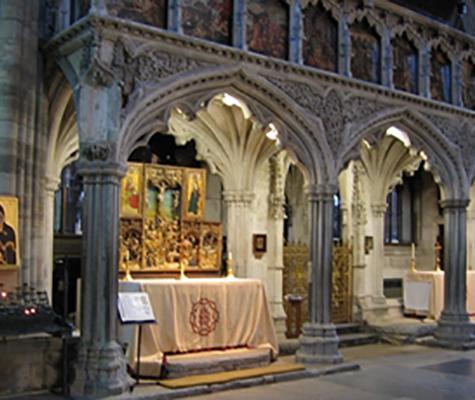Exeter Cathedral's Third Millennium Campaign seeks to raise a total of £8 million to support several important areas in the traditional life of the cathedral. These include assuring the future of choral singing, restoring the organ, renovating the fabric of the cathedral and the historic buildings it owns and much work on improving public access.
For 2009, Valencia Communities Fund awarded two Landfill Communities Fund grants to support this work; £150,000 for a new open air project, the Vision for the Green, and a further £250,000 towards improving public access to the library and archives.
The north side of the green is a popular open space forming part of Exeter's Cathedral Close. It has become seriously worn and degraded over the years as a natural result of its popularity with local people and tourists. "The Vision for the Green is a scheme to reinvigorate this area with new paths, interpretation boards, trees, seating and lighting," said Jill Taylor, the campaign director at Exeter Cathedral. "This is important as the setting enhances the visual impact of the cathedral and the entire visitor experience."
Exeter Cathedral's Library and Archives contain nationally and internationally significant treasures, some of them over 1,000 years old. Valencia Communities Fund gave £100,000 towards the conservation of the building in 2008. Its latest donation will be used towards the cost of housing the Library and the Archives together for the first time in proper environmental conditions, as well as conservation work on the rich heritage of manuscripts, archives and books that are housed there, making them more accessible to the public. The library's treasures include the Exeter Book, which dates from around AD 965-975 and is of enormous value in the study of Old English poetry. Only 30,000 lines of Old English still exist today and the Exeter Book contains a third of them.
Also on view is the Exon Domesday. It is the only regional Domesday survey to have survived, and was used to compile the West Country section of the Domesday Book in 1086. The survey contains much detailed information that was excluded from the final Domesday Book and so it is of exceptional value to historians and scholars.


